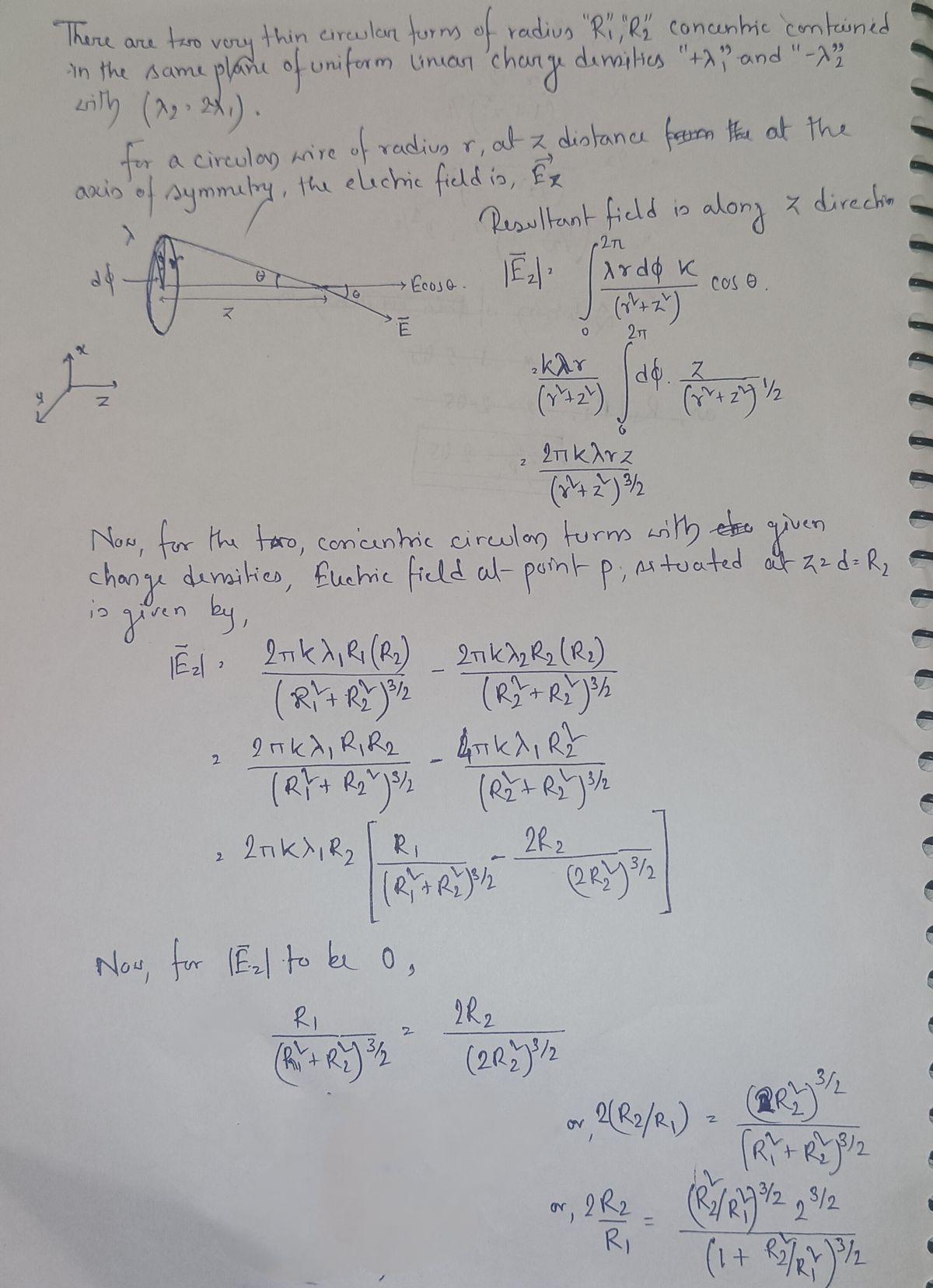81. There are two very thin circular turns of radius "R₁", "R₂", concentric contained in the same plane, of uniform linear charge densities "+₁"and "-₂" (with 2₂=221). For what reason R₂/R₁=? of the radius, the electric field at a point P, located at a distance d = R₂, on the axis of symmetry that passes through the common center and is perpendicular to the plane containing the turns, the electric field is zero? (k-9-10° N•m²/C²_)
81. There are two very thin circular turns of radius "R₁", "R₂", concentric contained in the same plane, of uniform linear charge densities "+₁"and "-₂" (with 2₂=221). For what reason R₂/R₁=? of the radius, the electric field at a point P, located at a distance d = R₂, on the axis of symmetry that passes through the common center and is perpendicular to the plane containing the turns, the electric field is zero? (k-9-10° N•m²/C²_)
Related questions
Question

Transcribed Image Text:81. There are two very thin circular turns of radius "R₁", "R₂", concentric contained in the same
plane, of uniform linear charge densities "+₁"and "-₂" (with 22=221). For what reason
R₂/R₁=? of the radius, the electric field at a point P, located at a distance d = R₂, on the axis of
symmetry that passes through the common center and is perpendicular to the plane
containing the turns, the electric field is zero? (k=9-10° N•m²/C²_)
a) 1,983
b) 2,000
c) 2,017
d) 2,034
e) 2,051
Expert Solution
Step 1: Solution part-1

Step by step
Solved in 3 steps with 2 images
